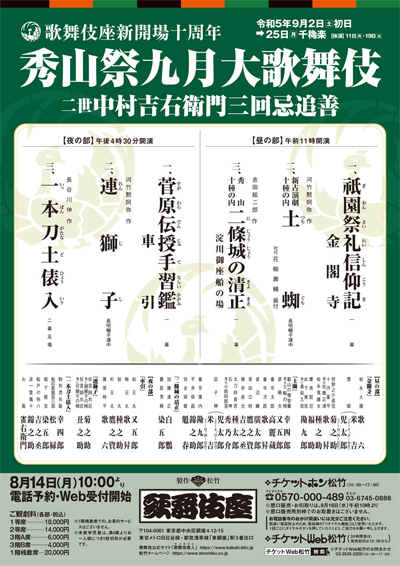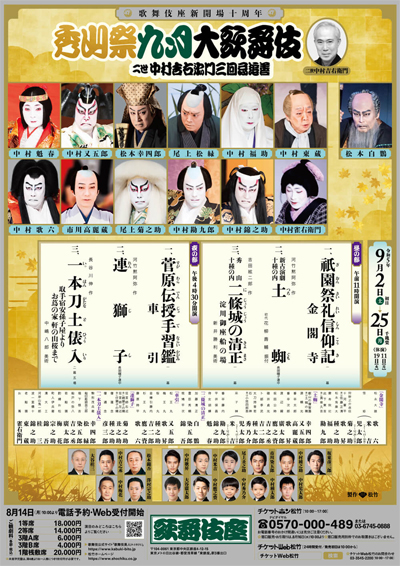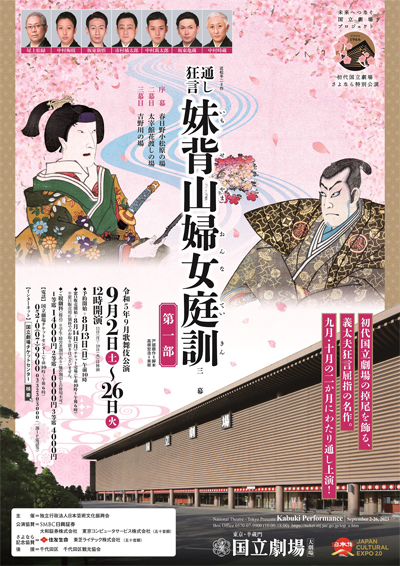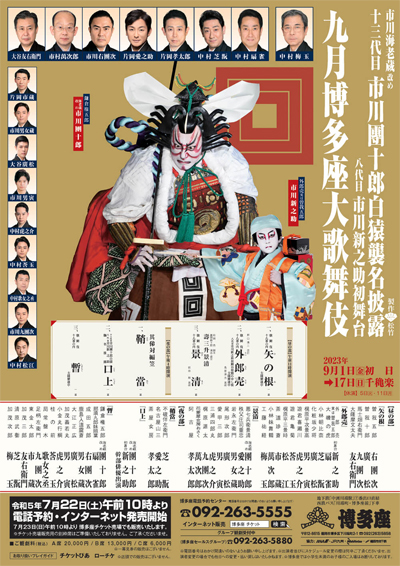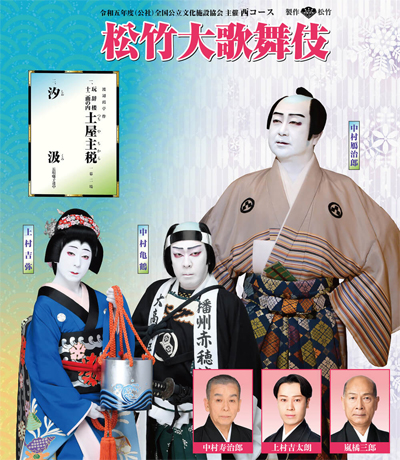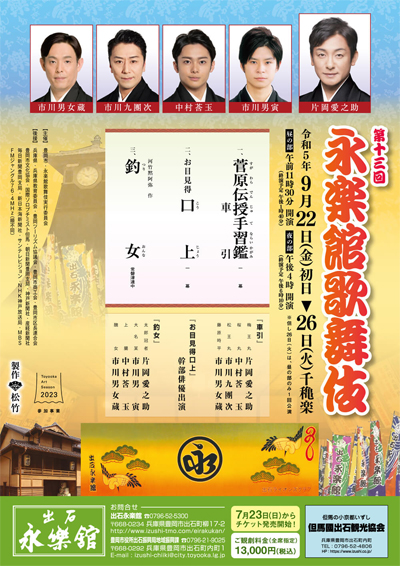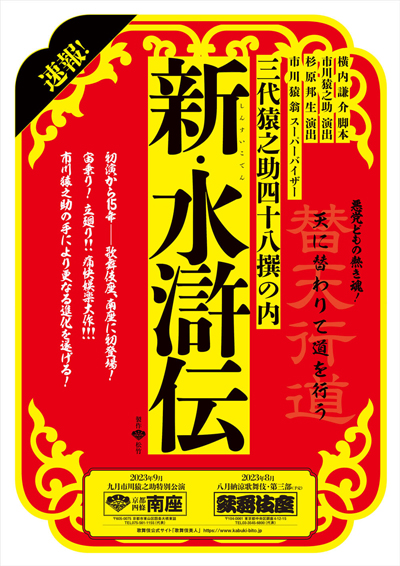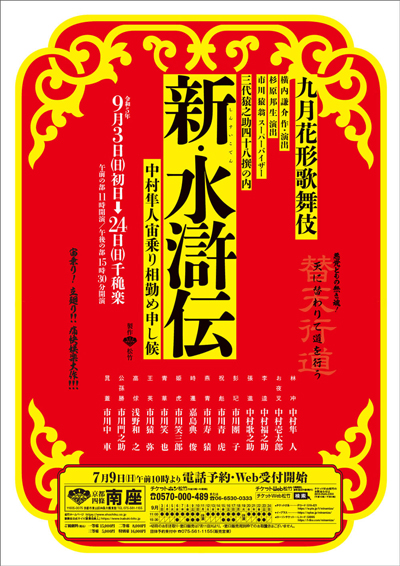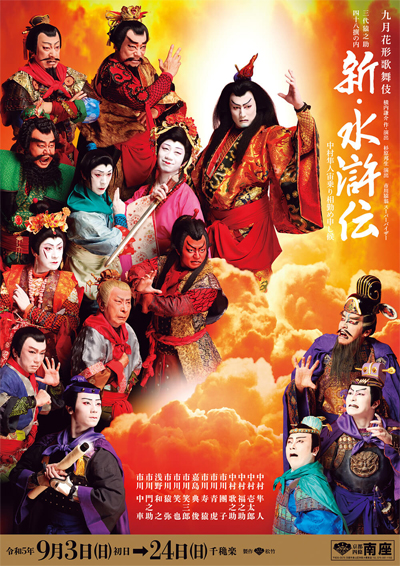| Comments |
There will be a 2nd generation National Theatre in a near future! From November 2022 to October 2023, Sayonara K˘en
('Farewell Performances') were and will be staged in the existing theater. Then, the 1st generation National Theatre, which opened in November 1966, will be closed and rebuilt.
These farewell performances have been precisely labeled as Mirai e Tsunagu Kokuritsu Gekij˘ Purojekuto ~ Shodai Kokuritsu Gekij˘ Sayonara K˘en
(literally 'Project to Connect the National Theater to the Future ~ First generation National Theater Farewell Performances').
In November 1966 [more details] and December 1966 [more details], the opening of the theater was celebrated with a t˘shi ky˘gen production of the classic "Imoseyama Onna Teikin".
In September 2023 and October 2023, the closing is celebrated with ... a t˘shi ky˘gen production of the classic "Imoseyama Onna Teikin".
Imoseyama: "Imoseyama Onna Teikin", is a
masterpiece by Chikamatsu Hanji (1725~1783) first presented in 1771 in the
puppet theater. It is an epic taken from early Japanese history, weaving
together history, legend and myth. The country chafes under the domination of
the dictator Iruka. This short section of the full-length play shows the story
of two rival families who are only alike in being dominated by the dictator
until a tragedy reminiscent of Romeo and Juliet brings them together.
Komatsubara: on a beautiful spring day, handsome young Koganosuke (Nakamura Mantar˘), son of Daihanji and Hinadori (Nakamura Baishi),
the beautiful daughter of Sadaka, widow of Dazai happen to meet and fall in love, not realizing
that their families are bitter enemies, with estates on either side of the
Yoshino river. But Koganosuke also has heavy duties and helps Uneme (Band˘ Shingo),
the daughter of the loyal minister Fujiwara no Kamatari to escape from the
clutches of the evil minister Emiji.
Hana Watashi: Iruka (Band˘ Kamez˘) blames Koganosuke for the loss
of Uneme and has heard of his love for Hinadori. He fears that these two
rival clans may be plotting against him so summons Daihanji (Onoe Sh˘roku)
to Sadaka's (Nakamura Tokiz˘) mansion, confronts the two rival parents and
orders Koganosuke to become his retainer and Hinadori to serve in his bedchamber.
He gives them branches of cherry blossoms to be thrown into the Yoshino
river as a signal of the answers of the young people.
Yoshinogawa: in the most famous scene of the play,
there is a spectacular set with the house of Daihanji on one side of the
stage and the house of Sadaka on the other side with the river running through
the center of the stage. Both parents know that their children would
rather accept death than bow down to the dictator Iruka, but hide this and
speak proudly and aggressively to the other, hoping desperately that at
least the other child might be spared. However, all their efforts are
in vain and finally, in death, the young couple is united in marriage,
ending the feud between the two families.
Sources: Earphone Guide Website or Sh˘chiku Kabuki Official Website
|

